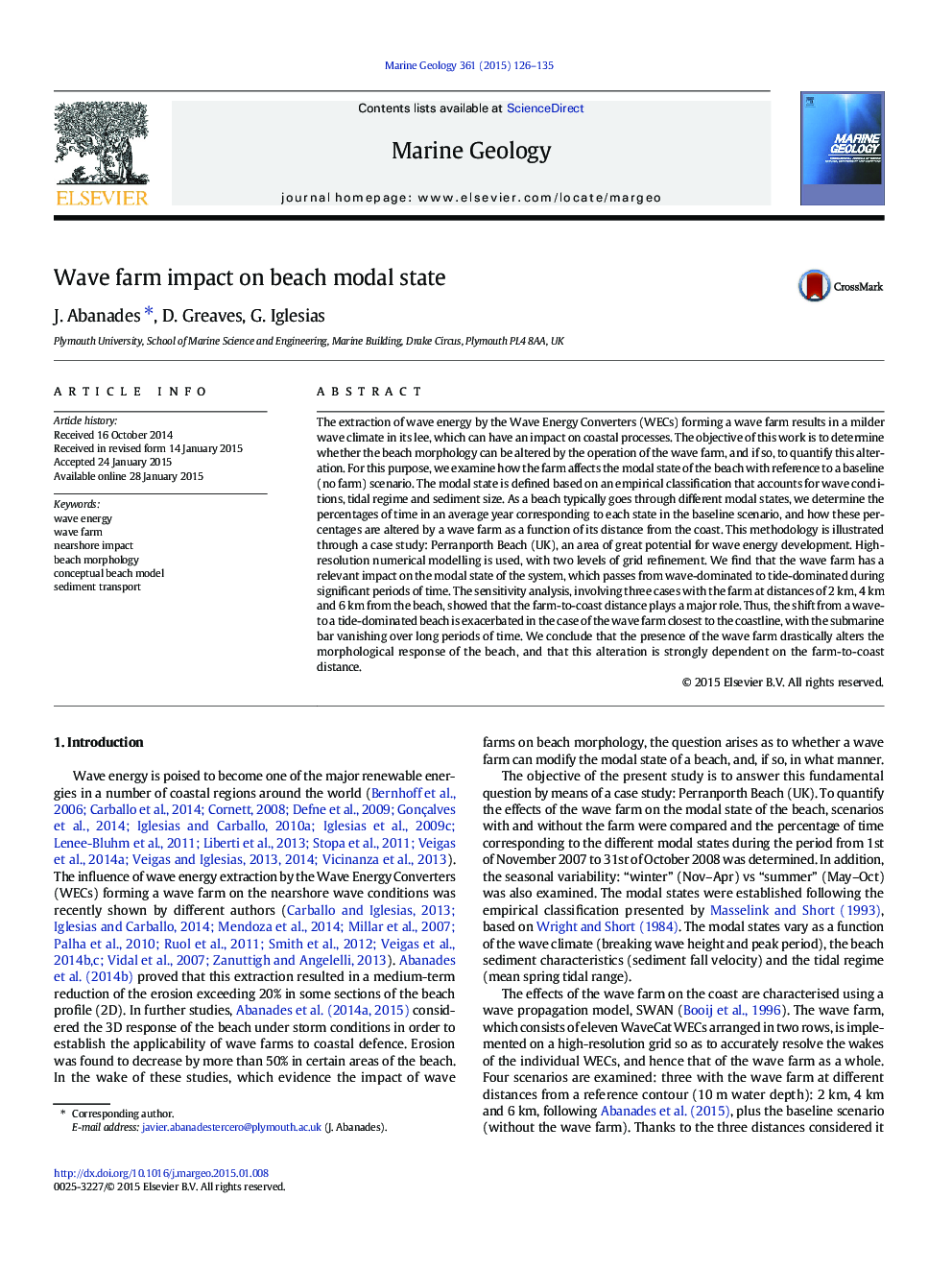| Article ID | Journal | Published Year | Pages | File Type |
|---|---|---|---|---|
| 6441556 | Marine Geology | 2015 | 10 Pages |
Abstract
The extraction of wave energy by the Wave Energy Converters (WECs) forming a wave farm results in a milder wave climate in its lee, which can have an impact on coastal processes. The objective of this work is to determine whether the beach morphology can be altered by the operation of the wave farm, and if so, to quantify this alteration. For this purpose, we examine how the farm affects the modal state of the beach with reference to a baseline (no farm) scenario. The modal state is defined based on an empirical classification that accounts for wave conditions, tidal regime and sediment size. As a beach typically goes through different modal states, we determine the percentages of time in an average year corresponding to each state in the baseline scenario, and how these percentages are altered by a wave farm as a function of its distance from the coast. This methodology is illustrated through a case study: Perranporth Beach (UK), an area of great potential for wave energy development. High-resolution numerical modelling is used, with two levels of grid refinement. We find that the wave farm has a relevant impact on the modal state of the system, which passes from wave-dominated to tide-dominated during significant periods of time. The sensitivity analysis, involving three cases with the farm at distances of 2Â km, 4Â km and 6Â km from the beach, showed that the farm-to-coast distance plays a major role. Thus, the shift from a wave- to a tide-dominated beach is exacerbated in the case of the wave farm closest to the coastline, with the submarine bar vanishing over long periods of time. We conclude that the presence of the wave farm drastically alters the morphological response of the beach, and that this alteration is strongly dependent on the farm-to-coast distance.
Related Topics
Physical Sciences and Engineering
Earth and Planetary Sciences
Geochemistry and Petrology
Authors
J. Abanades, D. Greaves, G. Iglesias,
